Today I want to talk about a sweet that I have already mentioned several times, but that I never get tired of making. I always find a good excuse to prepare it, and this time I wanted to claim it because it has a special place in my heart and in my kitchen. 💓 The sweet is made with Chinese tamarind, although in other parts of Venezuela they call it carambola. In my house we have always called it Chinese tamarind, and it is a fruit that abounds in the yard. Honestly, I don't know much about its origins, but what I do know is that it has a unique flavor, especially the one that our tree gives. This Chinese tamarind tree grew in a rather curious way. It is right next to the house's laundry room, and although it sounds strange, the soapy water that comes out of the drain waters it. One day, someone left a bag there and, suddenly, the plant began to grow on its own. Since then, it has given us a good amount of fruit every year, but the most interesting thing is that the tamarind from this tree is different from the one I have tried elsewhere. Compared to the strong, acidic tamarinds I know from Aragua or from the family plot, this one has a much more subtle, almost sweet flavor, and the texture reminds me of pear. 😆 In fact, several people who have tried this tamarind tell me the same thing, that it is not the typical flavor one expects from this fruit. I think that this special touch comes from the particular conditions in which it grew, right next to the laundry room.
Hoy les quiero hablar de un dulce que ya he mencionado varias veces, pero que nunca me canso de hacer. Siempre encuentro una buena excusa para prepararlo, y esta vez quise reivindicarlo porque tiene un lugar especial en mi corazón y en mi cocina. 💓 El dulce está hecho con tamarindo chino, aunque en otras partes de Venezuela lo llaman carambola. En mi casa siempre le hemos dicho tamarindo chino, y es una fruta que abunda en el patio. Sinceramente, no sé mucho de sus orígenes, pero lo que sí sé es que tiene un sabor único, especialmente el que da nuestro árbol. Este árbol de tamarindo chino creció de una manera bastante curiosa. Está justo al lado del lavadero de la casa, y aunque suena raro, el agua enjabonada que sale del desagüe lo riega. Un día, alguien dejó una bolsa por ahí y, de repente, la planta empezó a crecer por su cuenta. Desde entonces, cada año nos da una buena cantidad de fruta, pero lo más interesante es que el tamarindo de este árbol es diferente al que he probado en otros lugares. En comparación con los tamarindos ácidos y fuertes que conozco de Aragua o de la parcela familiar, este tiene un sabor mucho más sutil, casi dulce, y la textura me recuerda a la pera. 😆 De hecho, varias personas que han probado este tamarindo me dicen lo mismo, que no es el típico sabor que uno espera de esta fruta. Yo creo que ese toque especial viene de las condiciones particulares en las que creció, justo al lado del lavadero.
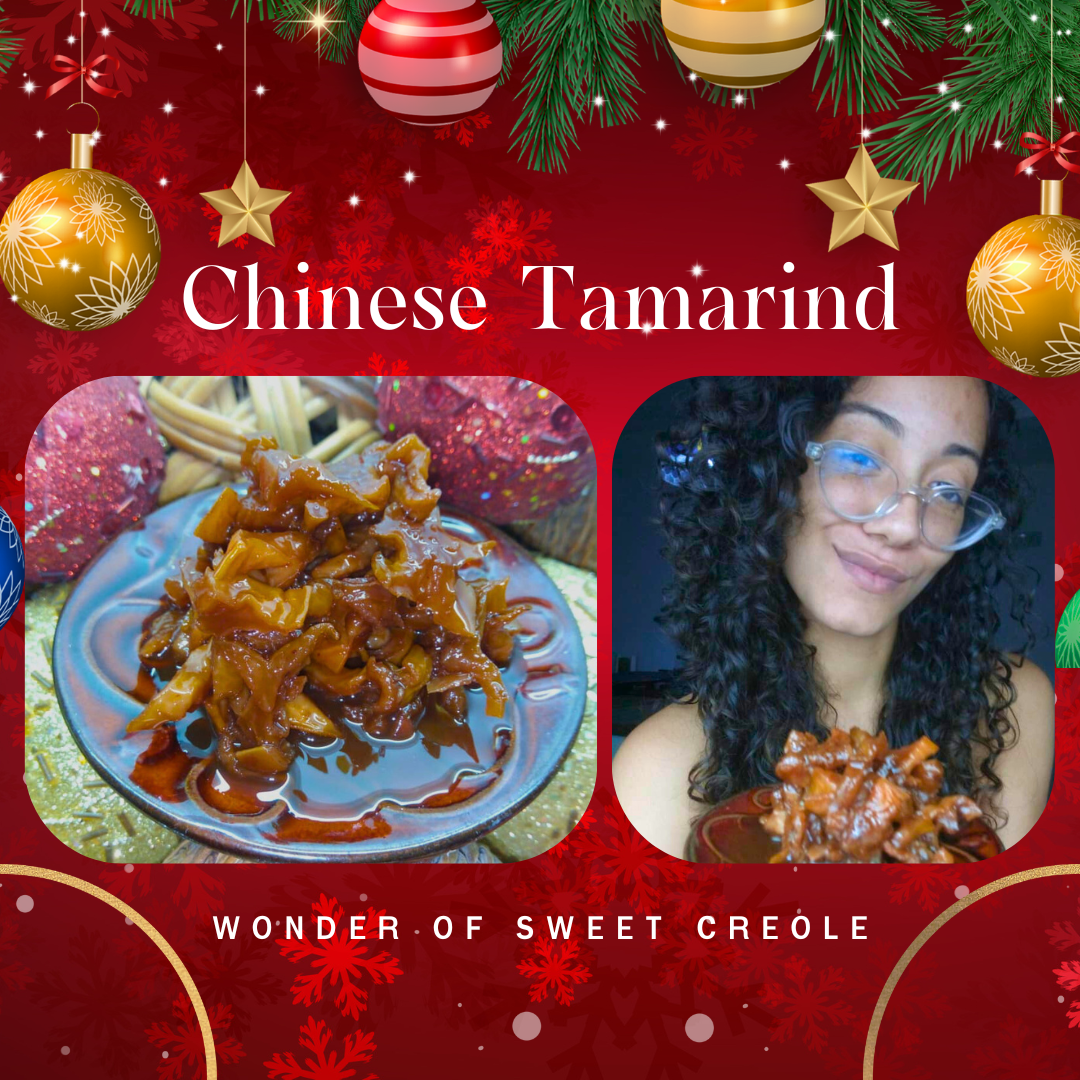
Every year, when the December season arrives, I get into creative mode and prepare this Chinese tamarind candy with a lot of love. This year, in October, I'm already planning everything I'm going to do in December, and the candy is a tradition that can't be missed. I like to start early, collecting the fruits directly from the plant. I like it best when the tamarinds are green or medium-green, because the texture is firmer, and I love to feel that crunch when I bite into them. I'm not as attracted to very ripe tamarinds because their texture is softer, and I prefer something more al dente. To make the candy, the first thing is to collect the ingredients. 🍽️ The panela de papelón is key, and I always use one that I buy in Choroní. I'm lucky that a neighbor brings it to me every time he goes to town, and it's the best I've ever tried and completely organic, made in the traditional way, and with an authentic flavor that gives a special touch to the candy. I also need bayrum or malagueta leaves, which give it an exquisite aroma, as well as vanilla, cloves, and a little water to complete.
Cada año, cuando llega la temporada decembrina, me pongo en modo creativa y preparo este dulce de tamarindo chino con mucho amor. Este año ya en octubre estoy planificando todo lo que voy a hacer en diciembre, y el dulce es una tradición que no puede faltar. Me gusta empezar desde temprano, recolectando los frutos directamente de la mata. A mí me gusta más cuando los tamarindos están verdes o medianamente verdes, porque la textura es más firme, y me encanta sentir ese crujido al morderlos. Los tamarindos muy maduros no me atraen tanto porque su textura es más blanda, y yo prefiero algo más al dente. Para hacer el dulce, lo primero es recolectar los ingredientes. 🍽️ La panela de papelón es clave, y yo siempre uso una que compro en Choroní. Tengo la suerte de que un vecino me la trae cada vez que va al pueblo, y es la mejor que he probado y completamente orgánica, hecha de la manera tradicional, y con un sabor auténtico que le da un toque especial al dulce. También necesito hojas de bayrum o malagueta, que le dan un aroma exquisito, además de vainilla, clavos de olor, y un poquito de agua para completar.
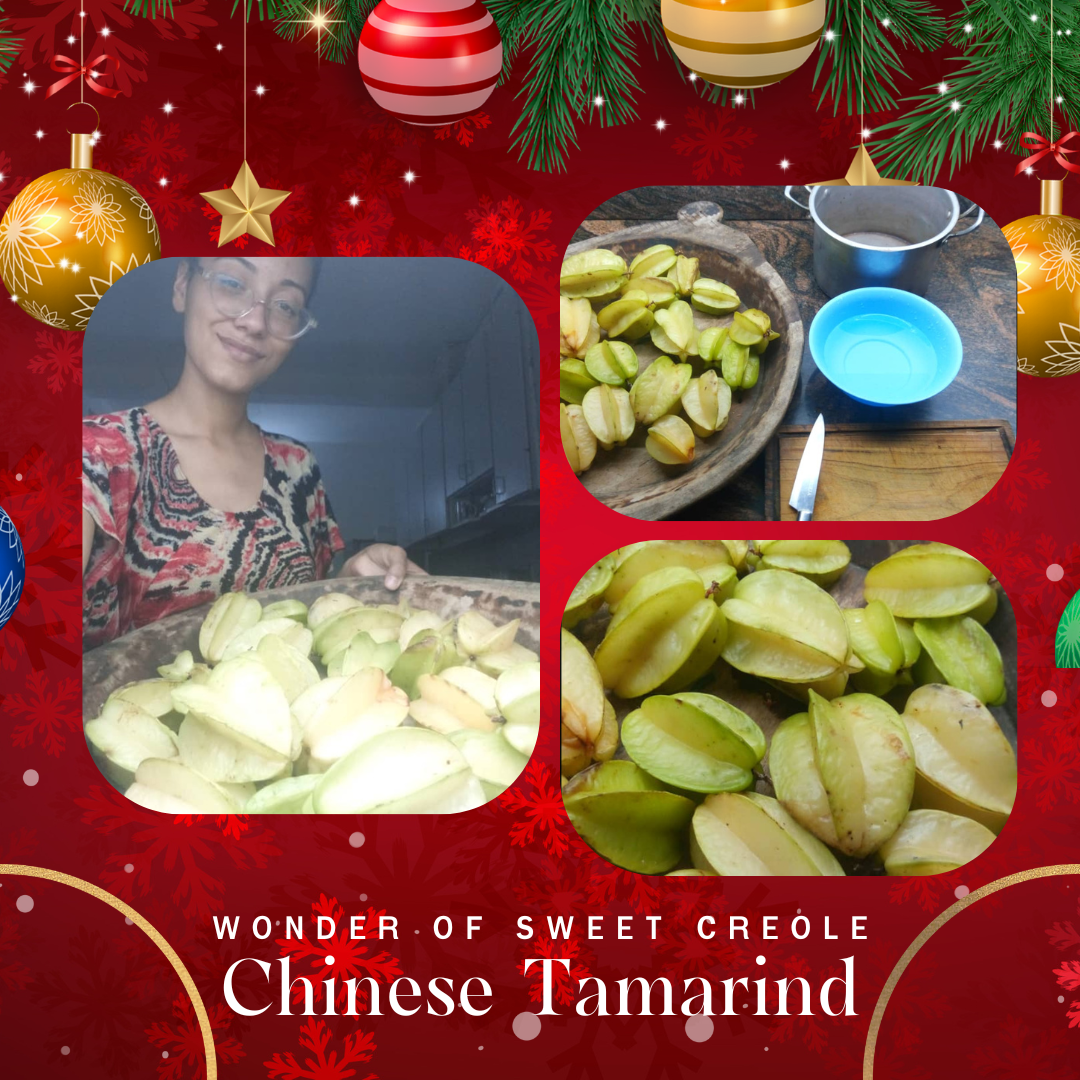
The preparation process is very simple. First, I take the tamarinds off the tree and wash them well. Then I remove the ugly or old parts, those that don't look appetizing, and cut them into slices. The interesting thing is that when you cut them into slices, the star shape of the tamarind is visible, and that gives a very nice visual touch to the sweet. Meanwhile, in a large pot, I melt the papelón with a little water, over medium-high heat. When it's become melao, which is basically a thick syrup, I remove it from the heat.
El proceso de preparación es muy sencillo. Primero bajo los tamarindos de la mata y los lavo bien. Después les quito las partes feas o viejas, esas que no se ven apetitosas, y los corto en rodajas. Lo interesante es que al cortarlos en rodajas, la forma de estrella del tamarindo queda a la vista, y eso le da un toque visual muy bonito al dulce. Mientras tanto, en una olla grande, pongo el papelón a derretir con un poquito de agua, a fuego medio-alto. Cuando ya está hecho melao, que es básicamente un jarabe espeso, lo retiro del fuego.
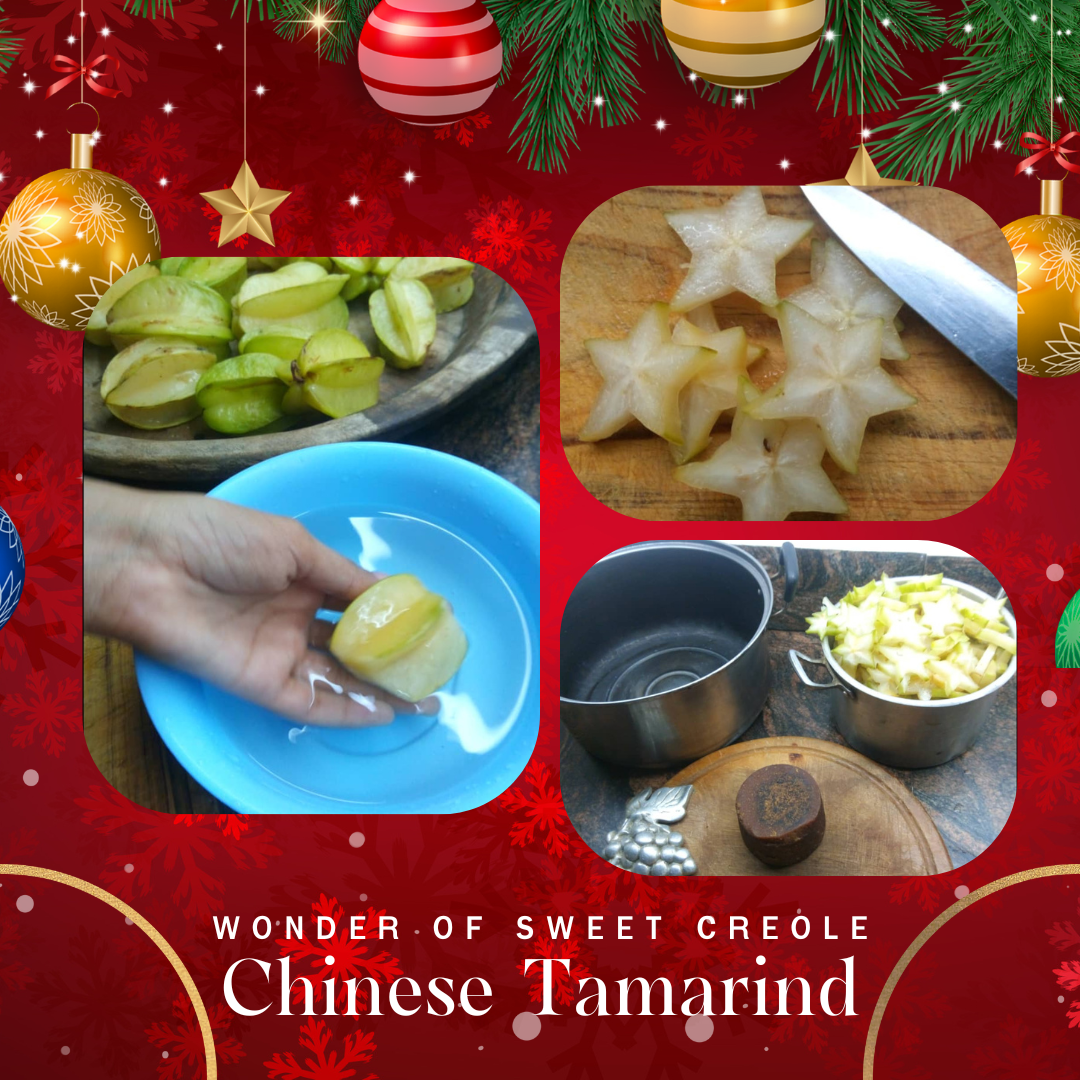
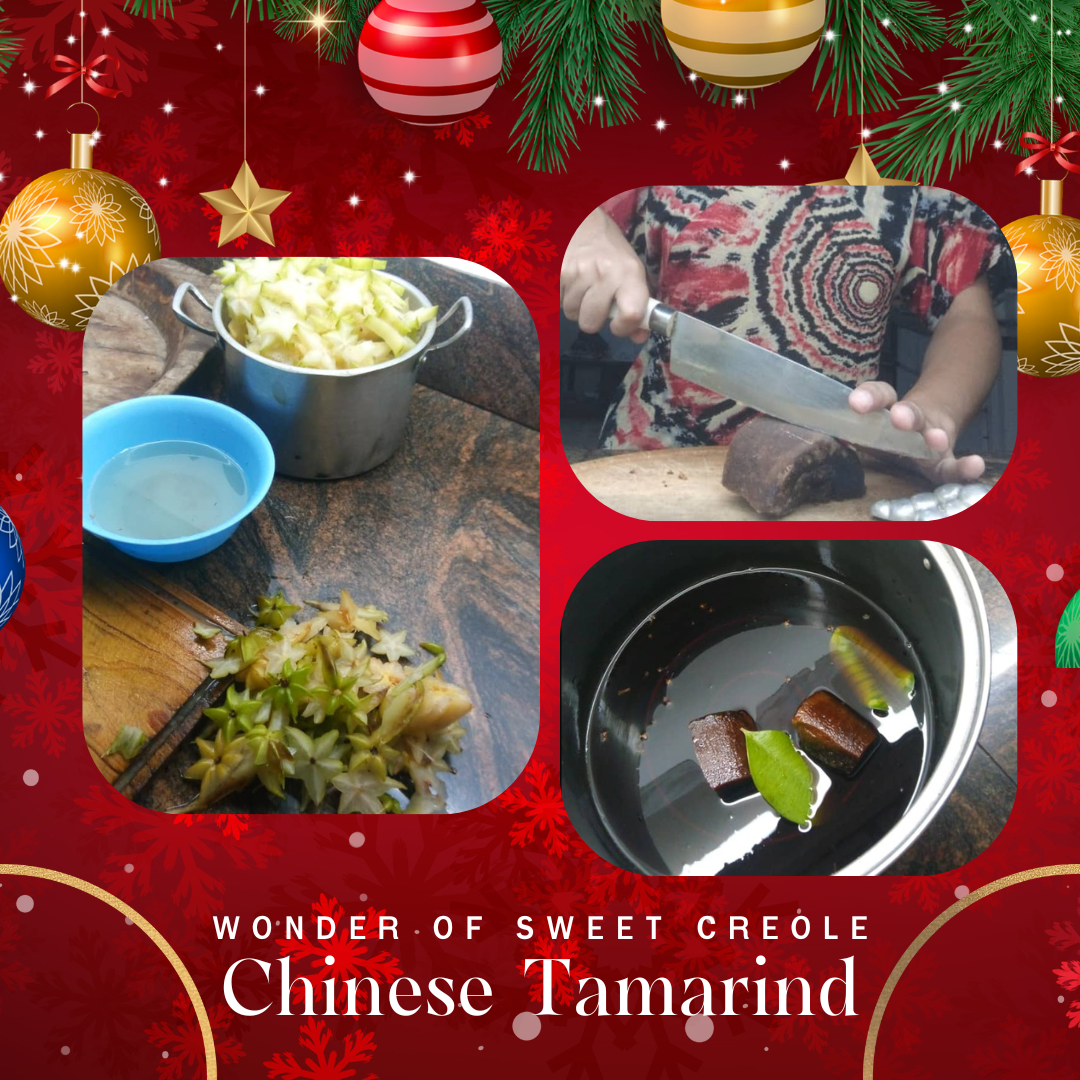
Then, in another pot, I place the slices of tamarind that I already cut, and pour the molasses on top. There is no need to add more water because the molasses is what will give it the perfect consistency. To this mixture I add vanilla, cloves, and bayrum leaves so that everything takes on flavor. Then, I cover the pot and let it cook on low heat so that the tamarinds absorb all the flavors well.
Después, en otra olla, coloco las rodajas de tamarindo que ya corté, y vierto el melao encima. No hace falta agregar más agua porque el melao es lo que le va a dar la consistencia perfecta. A esta mezcla le añado vainilla, los clavos de olor, y las hojas de bayrum para que todo tome sabor. Luego, tapo la olla y dejo que se cocine a fuego lento para que los tamarindos absorban bien todos los sabores.
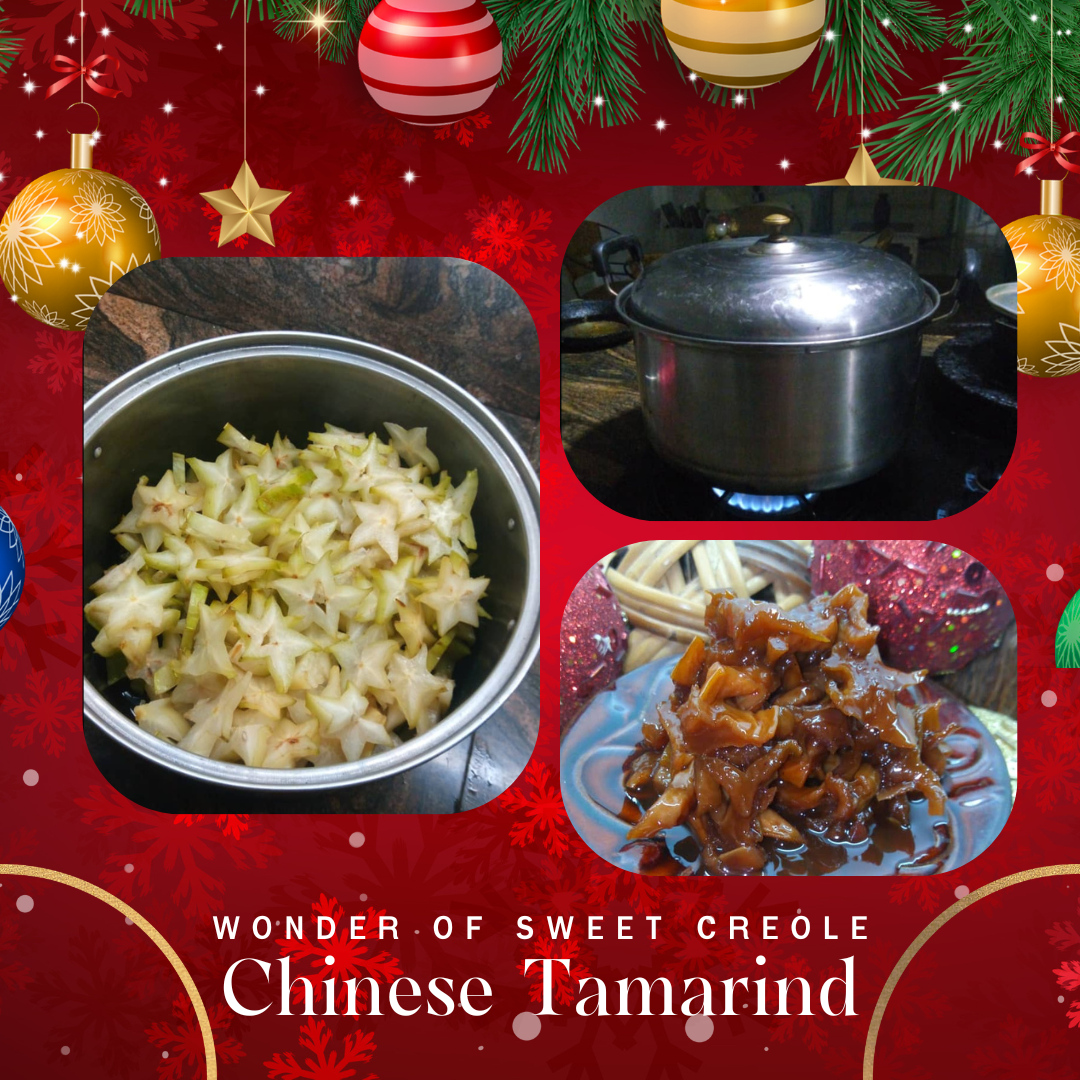
The result is a spectacular Chinese tamarind candy, which has a perfect balance between sweet and sour, and a firm but juicy texture. 🎄 ✨
El resultado es un dulce de tamarindo chino espectacular, que tiene un equilibrio perfecto entre lo dulce y lo ácido, y una textura firme pero jugosa. 🎄 ✨


This dessert is not only delicious, but it is full of memories and affection, making it ideal to share with family on any special occasion. Thank you for reading my post and I invite you to prepare recipes full of love.
Este dulce no solo es delicioso, sino que está lleno de recuerdos y cariño, lo que lo hace ideal para compartir con la familia en cualquier ocasión especial. Gracias por observar mi post y les invito a preparar recetas llenas de mucho amor.
